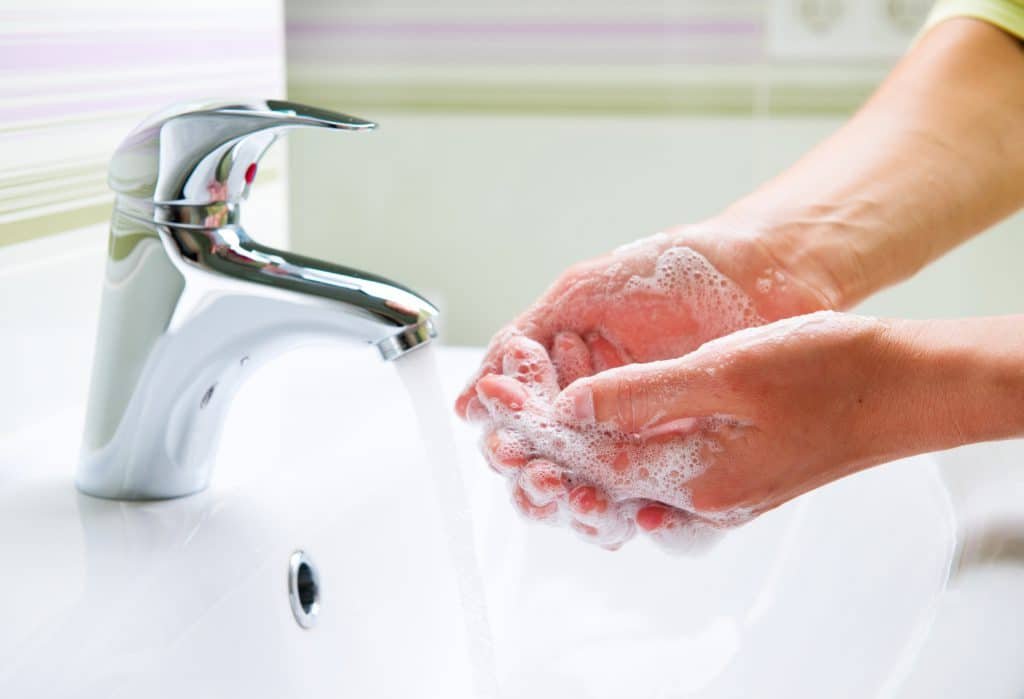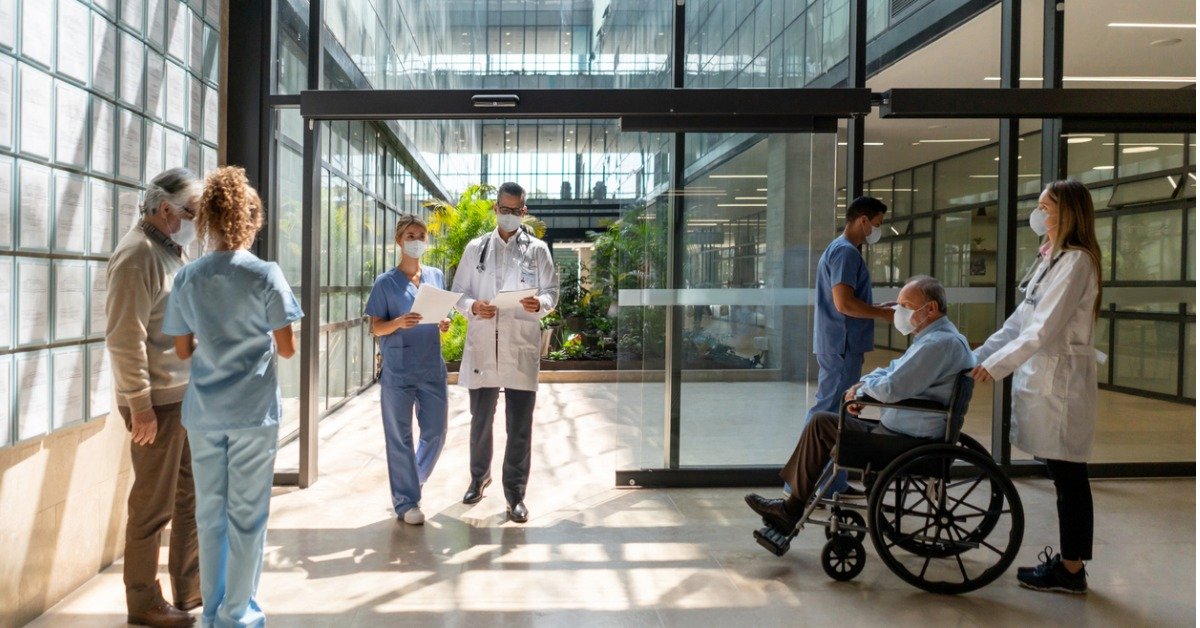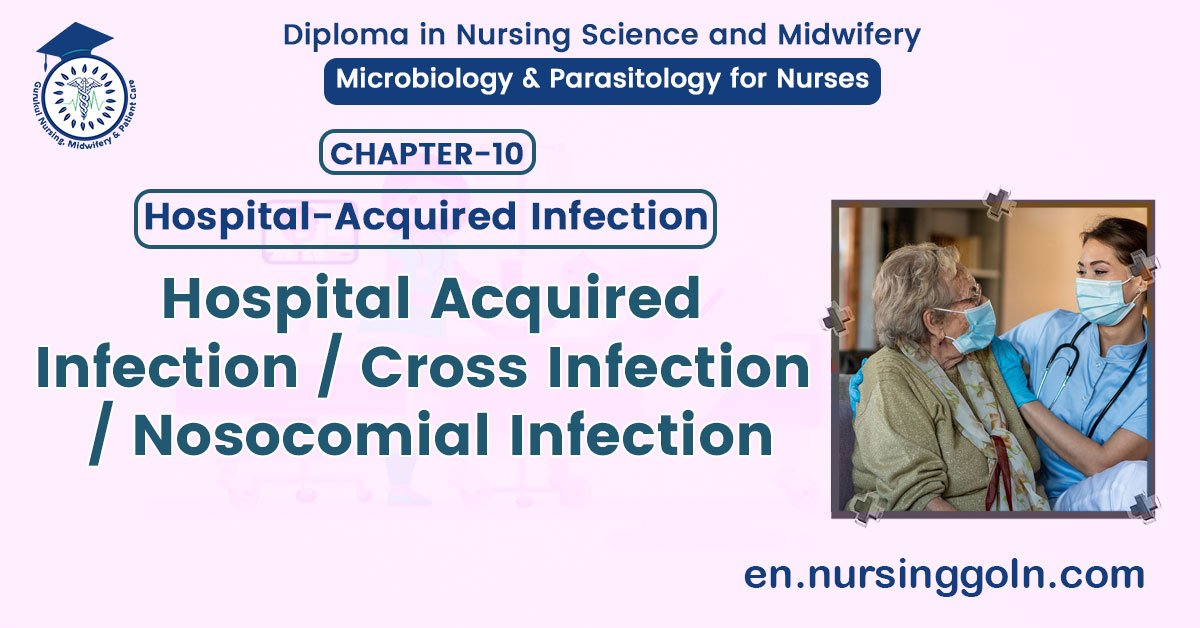Hospital Acquired Infection / Cross Infection / Nosocomial Infection – Basic microbiology, parasitology, and immunology; nature, reproduction, growth, and transmission of common microorganisms and parasites in Bangladesh; prevention including universal precaution and immunization, control, sterilization, and disinfection; and specimen collections and examination. Students will have an understanding of common organisms and parasites caused human diseases and acquire knowledge about the prevention and control of those organisms.
Hospital Acquired Infection / Cross Infection / Nosocomial Infection
Infections developing in patients in hospitals or other healthcare facilities after 48 hours of admission which are not present or incubating at the time of admission. They occur in 5-15% of patients admitted to hospital.
Or
A hospital-acquired infection (HAI), also known as a nosocomial infection, is an infection that is acquired in a hospital or other health care facility. To emphasize both hospital and nonhospital settings, it is sometimes instead called a health care-associated infection (HAI or HCAI).

Causes of Nosocomial Infection
Organisms responsible for hospital infection
A. Bacterial causes:
- Staphylococcus aureus
- Streptococcus pyogenes
- Enterococcus faecalis
- Peptostreptococcus
- Staphylococcus epidermidis
- Clostridium tetani
- Clostridium perfringens
- E. coli
- Klebsiella
- Proteus
- Bacteroids
- Pseudomonas
- Pneumococci
B. Viral causes: Respiratory viruses
C. Fungal causes: Candida albicans.
Common sources of hospital infection:
- From the unsterilized or contaminated instruments.
- From doctors & nurses – Obvious lesions, carrier in the nose of stuff.
- From the patient’s wound infection, infected urine, and infected stool.
- From environment – Air-born, Fomites.
Common Types of Nosocomial Infection
1. Hospital-acquired pneumonia
- Ventilator-associated pneumonia
2. Urinary tract infection
3. Gastroenteritis
4. Puerperal fever
Types of Nosocomial Infection
Endogenous infection: Arise from patient himself while he is in the hospital-
- Wound infection
- Infected urine.
- Infected stool.
- Following perforated peptic ulcer.
Exogenous infection:
- Derived from hospital environment;
Airborne.
Fomites.
- From the unsterilized or contaminated instruments.
- From doctors & nurses:
Obvious lesions.
Carrier in the nose of the stuff.
- From the hospital food.
Sources of Nosocomial Infection
- Unsterilized or contaminated instruments.
- Hospital personnel: Doctor, nurse, ward boy (obvious lesions, carrier in the nose of the stuff)
- From other patients wound infection, infected urine and infected stool.
- Waste disposers of hospital.
- From environment-Air-borne, fomites.
Routes of Spread of Cross Infection
The common routes of spread of cross infection area-
1. Direct contact: i.e. the organism may be transferred directly from the hands of a nurse or doctor to a susceptible patient.
2. Droplet infection: e.g. droplets released from nose and throat through coughing or sneezing.
3. Air-borne particles.
4. Release of hospital dust into the air.
5. Through various hospital procedures,
- Catheterization.
- Intravenous procedures.
- Infected cat gut
- Dressings.
- Sputum cups.
- Bed pans.
- Urinals.

Common Risk Factors of Nosocomial Infection
Risk factors three main criteria broadly enclose the factors predisposing a patient to infection in a hospital setting:
Increased susceptibility: Evidently, patients admitted in hospitals have poor state of health, which means lower defense quality against bacteria. This group includes
- Elderly.
- Premature babies.
- Immunodeficient (because of drug abuse, illness or irradiation therapy).
- specifically increased chances of respiratory tract infection.
Invasive devices:
- For instance intubation tubes
- Catheters.
- Surgical drains,
- Tracheotomy tubes.
Patients already colonized on admission are instantly put at greater risk when they undergo an invasive procedure.
Medications or treatment (e.g. repeated blood transfusions) themselves make the patient vulnerable to infections, e.g. antacid treatment or antimicrobial therapy (which eliminates competitive flora and allows flourishing of resistant organisms).
Prevention of Nosocomial Infection/Hospital Acquired Infection
1. Sterilization: Proper sterilization method should be maintained in the hospital settings for the prevention of nosocomial infection.
2. Isolation: Isolation precautions are designed to prevent transmission of microorganisms by common routes in hospitals. Because agent and host are more difficult to control.
3. Hand washing and gloving: Hand washing frequently is called the single most important measure to reduce the risks of transmitting skin microorganisms from one person to another. Gloving is very essential to reduce the risk of transmitting microorganisms from one person to another.
4. Where possible use of single use disposable items.
5. Ensuring an effective administrative set up.
6. Rational use of antibiotics
7. Proper hospital waste disposal
8. Active oversight within the hospital.
9. Wearing an apron during patient care to reduce the risk of infection. The apron should either be disposable or be used only when caring for a specific patient.
10. Adoption of effective aseptic techniques.
11. Detection of the carriers & proper treatment.
Another Answer
Prevention and control of hospital acquired / nosocomial infection
- Isolation: Infectious patients must be isolated.
- Hospital staff: Those who are suffering from skin diseases, sore throat, common cold, ear infection, diarrhoea or dysentery or other infectious aliments should be kept away from work until completely cured.
- Hand washing: A suitable disinfectant must be employed for hand washing when
dealing with patients. - Dust control: Suppression of dust by wet dusting and vacuum cleaning are important control measures.
- Disinfection: The articles used by the patients as well as patient’s urine, faeces and
sputum should be properly disinfected. - Control of droplet infection: Use of face masks, proper bed spacing, prevention of overcrowding and ensuring adequate lighting and ventilation are important control measures.
- Nursing techniques: Barrier nursing and task nursing to minimize cross infection.
- Administrative measures: To formulate policies regarding admission of infectious cases, isolation facilities, disinfection procedures, and in fact all matters relating to control of hospital acquired infection.

Roles and Responsibilities of a Nurse to Prevent Nosocomial Infection
The followings are specific preventive measures all nurses should carry out :
- Awareness of the possible risk of infection among hospitalized patient.
- Catheter associated urinary tract infections are the cause of hospital associated infections. If possible avoid the use of indwelling catheters, use an alternate form of drainage such as condom drainage, suprabubic catheterization or intermittent catheterization. If an indwelling catheter must be used it should be removed promptly when no longer needed.
- Great care must be exercised in using and sterilizing respiratory therapy equipment. Every precaution should be taken to reduce the possibility of aspiration.
- Prolonged I/V, therapy should be avoided. Scrupulous attentions should be paid to inserting the needle properly, protecting the needle site and observing and caring for I/V set up.
- Use all surveillance and preventive methods known to provide the safest possible environment for patients, personnel and visitors.
- Fundamental to the control of infection are current hand washing procedures and strict aseptic technique applied to all diagnostic and therapeutic procedures involving the use of catheters, cardiac pacing, I/V therapy, endotracheal and tracheostomy tube drainage and wound care.
Read More….
